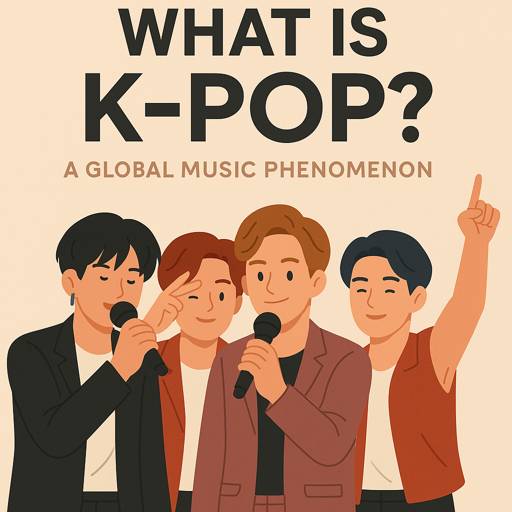Introduction: K-pop Beyond Borders
K-pop, short for Korean pop music, is no longer a niche genre confined to South Korea. It has transformed into a global phenomenon. It has millions of fans across Asia, the Americas, Europe, and even the Middle East and Africa. K-pop has infectious melodies and synchronized choreography. Its high production values and devoted fandoms have built a cultural empire. This empire transcends language and geography.
But how did K-pop evolve from local idol groups into a multi-billion-dollar global industry? Let’s explore its origins, structure, key elements, and why it continues to captivate audiences worldwide.
1. Origins and Evolution of K-pop
Modern K-pop as we know it began in the 1990s. This era started most notably with Seo Taiji and Boys in 1992. They introduced Western musical styles like hip-hop and R&B to Korean audiences. This marked a cultural shift in Korean music.
The 2000s saw the rise of idol groups created by major entertainment companies such as SM, YG, and JYP. These companies pioneered the “training system.” Young talents undergo years of intense vocal training. They also receive dance and language training before debuting. This system became a cornerstone of the K-pop industry.
With the rise of social media and YouTube in the 2010s, groups like BIGBANG and Girls’ Generation gained international fans. Eventually, BTS and BLACKPINK also found global audiences. BTS, in particular, became the first Korean act to top the Billboard Hot 100 and perform at the Grammys.
2. What Makes K-pop Unique?
a. Performance-Centered Music
K-pop isn’t just about sound — it’s a full performance package. Every comeback involves meticulously designed choreography, colorful visuals, and concept-driven music videos.
b. Concept and Storytelling
Each group often has a unique concept or storyline. One example is the “school trilogy” of BTS. Another example is EXO’s “superpower” universe. These narratives keep fans emotionally invested.
c. Language and Global Appeal
Most lyrics are in Korean. To reach international fans, songs often include English hooks and verses. Some groups even release songs in Japanese, Chinese, or full English.
d. Fan Engagement
Perhaps the most distinctive aspect is the fandom culture. K-pop fans actively promote their favorite groups. They organize streaming parties. They vote in global polls. Fans even donate to charities in the artists’ names. The relationship between idols and fans is often described as deeply emotional and reciprocal.
3. K-pop as a Soft Power Tool
K-pop plays a crucial role in South Korea’s cultural diplomacy. Referred to as a form of “soft power,” K-pop promotes Korean language, fashion, food, and societal values abroad. The Korean government has even supported K-pop exports as part of national branding.
This cultural outreach has had tangible effects:
- Surge in interest in learning Korean (Hangul)
- Increased K-tourism to Seoul and beyond
- International fashion and beauty trends inspired by K-idols
4. Challenges and Criticisms
While K-pop enjoys massive success, it also faces criticism. Problems such as intense trainee pressure and lack of mental health support have raised concerns. In addition, rigid contracts and fan overreach have sparked discussions about ethical standards in the industry.
Moreover, as K-pop becomes more global, it faces the challenge of maintaining authenticity while adapting to diverse cultural norms.
5. The Future of K-pop
With 4th and 5th generation idols like NewJeans, Stray Kids, ATEEZ, and LE SSERAFIM, K-pop continues to evolve. AI-generated content, virtual concerts, and interactive fan apps like Weverse and Universe hint at an even more immersive future.
Rather than fading as a trend, K-pop is expanding its influence across music, tech, gaming, and even Web3. It is evolving into a comprehensive cultural ecosystem.
Conclusion: K-pop Is More Than Just Music
K-pop represents a global movement, not just a genre. It’s a fusion of music, performance, fashion, identity, and fandom — all powered by a digital-native, globally connected fan base. K-pop continues to push boundaries. It proves that art doesn’t need to be in English to be loved around the world.
If you’re new to the genre, begin with BTS’s “Spring Day.” You can also try BLACKPINK’s “Kill This Love” or NewJeans’ “Hype Boy.” Prepare to be captivated.
